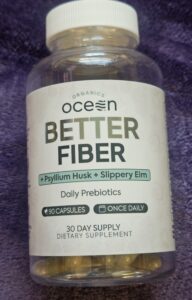NOTE: I am not a care provider, but someone who reads the literature and studies and shares what I learn. As always, check with your care provider before following anyone’s advice on the Internet. Also, I am not sponsored, nor receive any freebies from any of these companies. They are merely what works for me and my body. Remember, I said “MY BODY.” You get to decide what to choose for your own body.
I’ve been doing the Supplement Shuffle for 20-plus years now, ever since the RNY Gastric Bypass I had in 2001.
Now that I am on Mounjaro/tirzepatide for my health -which includes losing 214 pounds so far- I have been dancing around, again, with a variety of supps to see what works best for me. Because I keep being asked what I take, here is the info.
Fiber
The need for fiber in our bodies cannot be overstated. Whether you have the common side effect of constipation or the less common diarrhea, fiber is your best friend for the GLP-1 life.
I had diarrhea on Trulicity, but didn’t realize I was even on a GLP-1 for the year on Trulicity. Now that I am on Mounjaro, and know it is a GIP/GLP-1, it is the polar opposite and I have constipation. Not sure which is worse.
There are two kinds of fiber: Soluble and Insoluble.
Soluble fiber easily dissolves in water and breaks down into a gel-like substance in the colon. Insoluble fiber does not dissolve in water and is intact as food moves through the gastrointestinal tract.
Soluble fiber is great for diarrhea.
Fiber can be used to relieve mild-to-moderate diarrhea. Soluble fiber soaks up water in the digestive tract, which makes stool firmer and slower to pass.
Soluble fiber can be found in:
- Nuts and Seeds: Almonds, chia seeds, flaxseeds, peanuts, pumpkin seeds
- Grains: Oats, barley
- Legumes: Beans, lentils, peas.
- Vegetables: Avocado, broccoli, Brussels sprouts, carrots, green beans, kale, sweet potato
- Fruits: Citrus fruits, apples, bananas, berries, dried figs, pears
- Psyllium

Insoluble Fiber is best for constipation.
Preventing constipation: As an indigestible material, insoluble fiber sits in the gastrointestinal tract, absorbing fluid and sticking to other byproducts of digestion that are ready to be formed into the stool. Its presence speeds up the movement and processing of waste, helping prevent gastrointestinal blockage and constipation or reduced bowel movements.
Insoluble Fiber can be found in:
- Fruits: Apple, apricots, blueberries, figs, kiwifruit, mango, pear, raspberries, strawberries
- Nuts and seeds: Almonds, flaxseeds, psyllium seed husks, sesame seeds, split peas, sunflower seeds, walnuts
- Beans: Black beans, garbanzo beans, kidney beans, lentils
- Vegetables: Turnip, peas, okra, sweet potato, brussels sprouts, asparagus, kale, broccoli, carrots, green beans, beets, tomato sauce, corn, spinach, cauliflower, turnip, carrots, celery, onion, green pepper, cabbage, tomato, mushrooms, cucumber, lettuce, spinach
- Whole grain foods: Barley, brown rice, oat bran, oatmeal, quinoa, wheat bran, wholegrain pasta
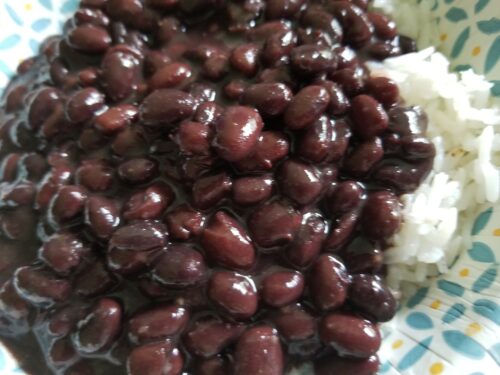
I do not eat enough insoluble fiber and many on the medications cannot, so supps are often a good idea -and necessary.
I wrote about what I was using six months ago in the post “Pooping is Way Underrated.” I did not know enough then to get things under control. In fact, I made them worse by using a laxative every day. DON’T DO THAT! I
I finally have the poop rhythm I need to feel comfortable and want to share what I take to keep things moving.
Fiber Supplements
Each of these supplements have their own purpose and are both vegan.
Organics Ocean’s Better Fiber, not on Amazon, is what I take daily. It has both Psyllium Husk and Slippery Elm. The bottle says 3 capsules once a day and not to exceed 3 capsules a day, but I take 3 capsules three times a day. You do what is right for your body. I started at 3 caps a day and it did nothing. I titrated up until my BMs changed. That is how I got to 3 three times a day.
Both Psyllium Husk and Slippery Elm are considered soluble fiber, but I swear, this works to keep my poop softer. Not as soft as I would like (more on that in a moment), but wayyyy better than being totally constipated.
Slippery Elm is a Mucilage: “Slippery elm contains mucilage, a substance that becomes a slick gel when mixed with water. It coats and soothes the mouth, throat, stomach, and intestines. It also contains antioxidants that help relieve inflammatory bowel conditions. Slippery elm causes reflux stimulation of nerve endings in the gastrointestinal tract leading to increased mucus secretion. The increased mucus production may protect the gastrointestinal tract against ulcers and excess acidity.”
Oxy-Powder is on Amazon and my daughter, also on tirzepatide, ordered me a bottle and I absolutely adore it. This item is made of a goodly amount of Magnesium and Natural Citric Acid.
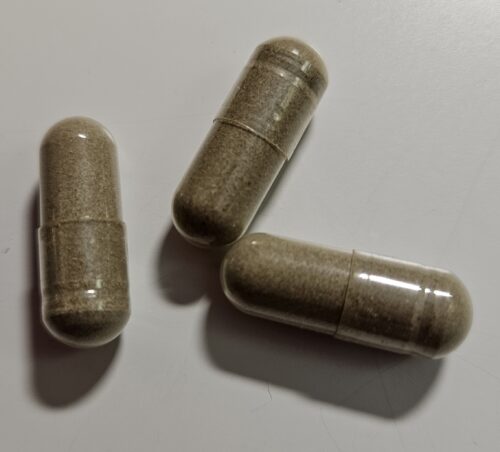
Though most people maintain adequate magnesium levels on their own, some disorders can lower magnesium levels, such as gastrointestinal disorders like Irritable Bowel Syndrome (IBS). Magnesium helps to increase the amount of water in the intestines, which can help with bowel movements. It may be used as a laxative due to these properties, or as a supplement for magnesium deficiency.
The instructions say to take 4 capsules 2-3 times a week, but someone I know took three and pooped all over the couch. I tried two and nothing happened. I took three a couple of days later, at night before bed, and in the morning I had a normal (I mean NORMAL!) bowel movement. Fluke? I did the same three days later. Great morning poop! Woo hoo! It has been three weeks now and the Better Fiber does help, but the Oxy-Powder takes care of a lot more inside my intestines. Thanks, Meghann!
Probiotics

Probiotics are good for a million different things, and there are almost that many types of strains. For constipation, these are the best types:
According to the review, the Lactobacillus casei Shirota (L. casei Shirota) and Bifidobacterium lactis strains both increased bowel movements. The L. casei Shirota strain also helped with multiple constipation symptoms and stool consistency.
I get this brand at Amazon, but Walmart and others sell it, too. It is vegan.
Over my many decades, I’ve learned that probiotics keep me from having intertrigo (yeast infection under my belly and breasts) and pyelonephritis (kidney infection). Probiotics are not the only way I keep intertrigo at bay, I have an Intertrigo post detailing all the information one needs to stop having massive yeast infections under skin folds.
Water
You knew I was going to talk about water, right? You can’t talk about constipation without the topic of water taking center stage. Before Mounjaro, I was drinking 8-10 cans of Diet Coke a day and having a bottle of amaretto (for pain) once a week or so. The moment I started Mounjaro, I quit amaretto, my life-long liqueur, because it tasted disgusting. Diet Coke tasted fine, but January 1, 2024, I quit Diet Coke and have never looked back. It’s important to know I have tried to quit drinking Diet Coke for at least three decades without success. This time, I finished the case, then never bought more. Even when I go out to a restaurant, I drink water. My family thinks I am possessed because I don’t drink Diet Coke anymore. I laugh and think of how much money I am saving!
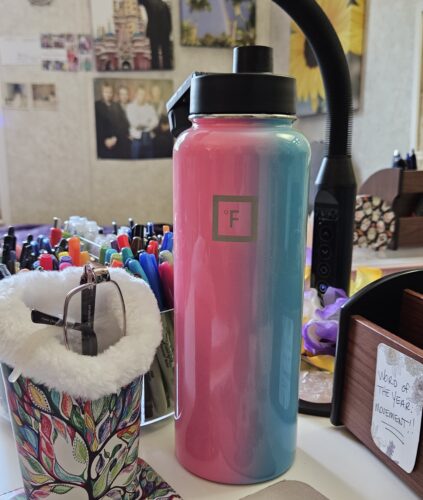
I bought a 40 oz. Iron Flask and easily fill that up 3-4 times a day. I also have a Brita Water Filter Pitcher because tap water is gross. Clean water tastes great! Two of my refills are with supplements. More on those in a few moments.
The more we are outside in the heat (it’s already hot here in Florida) or moving our bodies, the more water we need.
Protein Supplements
I have two of these.
One is Isopure. Amazon sells this, but so does Walmart and Publix. It’s a fairly common supplement now and is vegan.
I was first introduced to Isopure in 2001 when I had the RNY Gastric Bypass. For a long time, it was the only protein I could get in. I was mostly vegetarian, so cheese was my protein… not good for the waistline. Just like with GLP-1s, protein is crucial so as to not lose the precious muscle we have as we lose bunches of weight in a relatively short span of time. Just like with the Gastric Bypass, when we are on GLP-1s, it is supposed to be Protein First. Eating protein first allows our body to not get full on carbs or even veggies before we get the protein into our stomachs.

Isopure has 20 grams of protein per serving and this kind is a kind of fruit drink powder mixed into the water. I like the taste lots, but my daughter hates it. It’s a nostalgic taste for me having drunk it for years in the early 2000s. The ones that are like shakes are vile to me. Give me the fruity clear ones, please.
The powder doesn’t mix as easily as some powders, but I fill my Iron Flask halfway, put the scoop of powder in, then close the bottle and shake it sideways. Once I do that for a minute or so, then I will shake it long-ways. If I go right to the long-way shaking, the powder clumps in the mouth piece part. After I shake it good, I fill the rest of the bottle with water and this time shake it good long-ways. I never have clumps, but apparently some people do. I think the secret is to fill the bottle halfway, get as much dissolved as possible, then fill it the rest of the way up.
I have one Isopure a day.
The second protein supplement I use is Premier Protein. I get mine from Amazon, but I have seen it in stores, too.

I tried six different protein shake-like drinks and this was one I really liked. It is yummy! Not chalky. Tastes like chocolate milk. It’s made with milk, so is vegetarian, not vegan, though they do have a vegan version. The general recommendation is to ingest 15-30 grams of protein at a meal or sitting.
I do find a lot of conflicting information about amounts of protein to take in at a sitting. I like this study because it looked at many different studies and had a summary at the bottom. It took me awhile to figure out the math (not my strong suit), but I got it.
The average of the studies combined put the low end of protein intake at 35 grams four times a day which equals 140 grams a day. They didn’t seem to speak about women, so for young men, 35 grams a meal x four meals is also their recommended intake. For older men however, their protein needs drastically rose -and I will assume older women’s do, too. The recommendation for older men was 52 grams at each of their four meals a day making their daily total 208 grams.
Before I read this, I thought that anything above what we needed at a meal was useless for our bodies. But an interesting note in this paper popped out at me that was quite aligned with taking GLP-1s.
It seems logical that a slower-acting protein source, particularly when consumed in combination with other macronutrients, would delay absorption and thus enhance the utilization of the constituent AA (Amino Acid).
Feeling like a body builder reading about and writing this, I read up on slow-acting proteins. Casein, a by-product of milk, is the slow-acting protein of choice.
Casein protein provides the body with all of the amino acids necessary to help build muscle. Casein protein is digested more slowly than other proteins, so it might be better at reducing appetite and increasing feelings of fullness.
Does the casein and our own GLP-1 digestive tracts work together to squeeze out as much protein into our system as possible? I will keep reading and find out.
Collagen Peptides
Last, but a really important supplement I take, is Collagen. I should have started collagen two years ago when I first went on Trulicity. Interestingly, I didn’t seem to have a lot of sagging skin (besides my fat) as I lost the first 126 pounds. But when I started Mounjaro in September 2023, all of a sudden, my skin began to look like melting wax. Oddly, I took a picture of my arms without paying attention to the extent of their changes until I got to the third one and looked at them in order. These pics are taken every 60 days over an eight month period. I only lost 62 pounds in that time, but look at the dramatic changes. While I can find nothing in the literature about collagen depletion with GLP-1s, this only started when I began taking Mounjaro.
You may not be able to see, but I can see muscle changes in the April 2024 picture. I started working on strength training regularly in February (periodically before that) after seeing my arm pic. I should have started two years ago, but it is what it is.
So, collagen. I’ve been on these Live Conscious Collagen Peptides for two months now. I absolutely love the Peach Mango. It is a subtle taste and not too sweet at all. The powder is the best dissolved powder I’ve found in any powder supplement. I put the scoop in the same as I do with my Isopure and there is never any clumping. It really is so good and glad I found it. The reviews online sold me. You cannot get this from Amazon, but from Live Conscious themselves. It’s worth it!
Too early to see any skin changes, but I have high hopes. I know I will not be able to do much without all-over body surgery, but until I can afford it, I will have to help myself the best way I can.
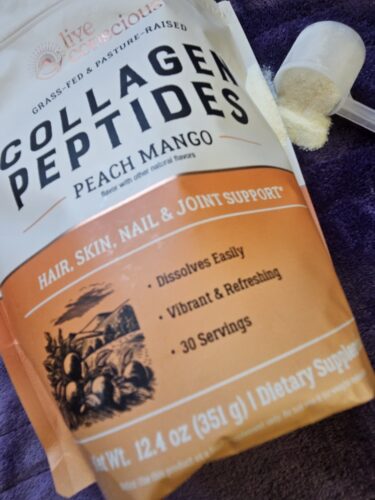
Interestingly, I am not grossed out by my body’s melting skin. More fascinated with it. When I look at myself critically, like many seeing this might be, I remind myself:
- I’m 63 years old.
- I’ve birthed two 9 pound babies and one 10 pound baby.
- I nursed four babies for several years.
- I’ve lost 111 pounds in a year, then regained it and more.
- I’ve lost 210 pounds in a year, then regained it and more.
- Now I have lost 214 pounds (as of today), off a 405 pound body, in two years.
My skin is tired of my weight loss and gain antics, so I’m letting it know this should be the last time losing with no time regaining. I’m being kind and thankful she is able to be so pliable with my ups and downs. She’s allowed to be tuckered out and stretched to her max.
I’m taking collagen to give her at least a tiny bit of help.
So There Are My Supplements!
Let me know in the comments what you are taking and how you came to the decision to add them to your daily routine. If you take something I don’t, tell us about it so we can learn from you!


